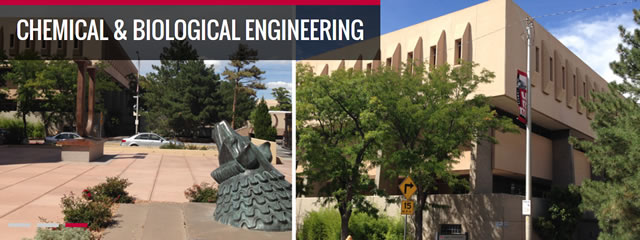
Chemical and Biological Engineering ETDs
Publication Date
Fall 11-14-2016
Abstract
Current thermal battery heat sources suffer from slow reaction propagation rates and require extreme care when handling to protect from inadvertent ignition sources. Nanostructured intermetallic heat sources are strong candidates for improved heat sources as they have high enthalpy of reaction, are highly conductive before and after firing and are completely gasless reactions. Current fabrication methods of these heat sources rely on a PVD multistep layering process that is time and capital intensive, and cost prohibiting to their use. The composition and nanostructuring these films require can be provided with electrochemical codeposition, where the two components (aluminum and nickel) are nanostructured by a concurrent electrodeposition and inclusion technique. This fabrication method has the advantages of being low temperature and high rate, and the potential to generate solid intermetallic heat sources cheaper and faster than current technology. This dissertation discusses the progress and challenges of developing a codeposition process that entails electrodepositing aluminum in an ionic liquid, while incorporating high volumes of conductive nickel nanoparticles. This method requires understanding of the electrodeposition kinetics and diffusion, particle motion and residence times, and physical properties of the solvent including viscosity. The electrochemical and physiochemical parameters are investigated experimentally and modeled semi empirically to optimize this complicated process. Successful particle inclusion and energetic output was achieved, to roughly half of the maximum energetic output. The low energy is due to lower than target particle incorporation, and the nickel to aluminum interface was shown to have minimal mixing and a small oxide layer.
Keywords
ionic liquid, aluminum, codeposition, nanoparticles, intermetallic, energetic
Sponsors
DOE
Document Type
Dissertation
Language
English
Degree Name
Chemical Engineering
Level of Degree
Doctoral
Department Name
Chemical and Biological Engineering
First Committee Member (Chair)
Plamen Atanassov
Second Committee Member
Dimiter Petsev
Third Committee Member
Chris Apblett
Fourth Committee Member
David R. Wheeler
Fifth Committee Member
Mehran Tehrani
Recommended Citation
Coleman, Jonathan J.. "Electrochemical Fabrication of Energetic Thin Films." (2016). https://digitalrepository.unm.edu/cbe_etds/59
